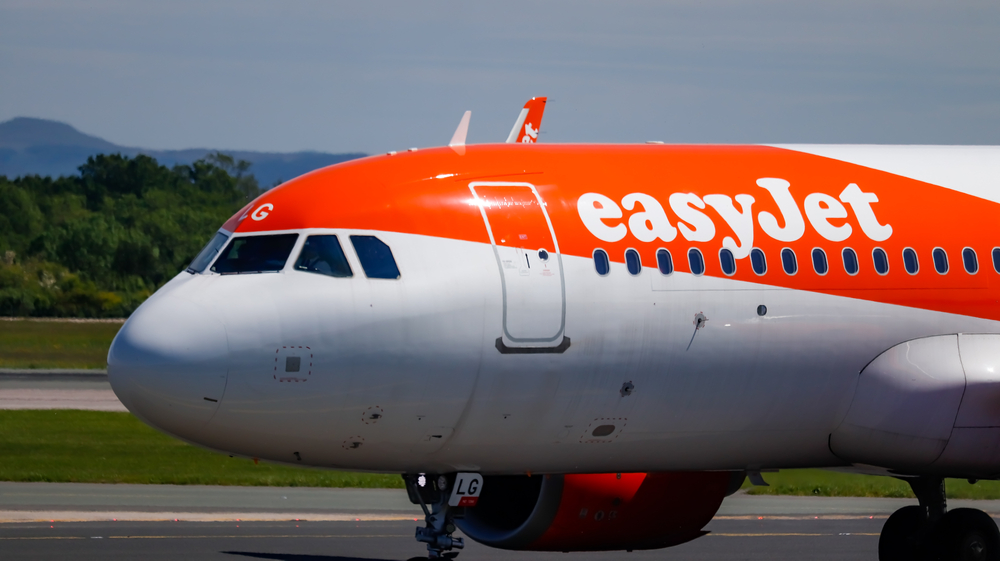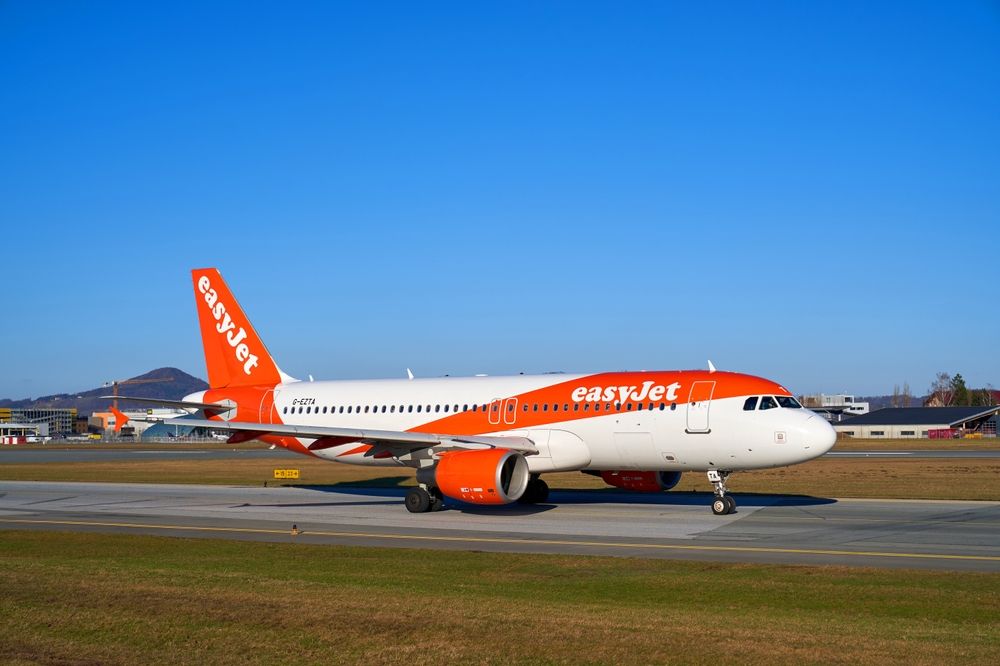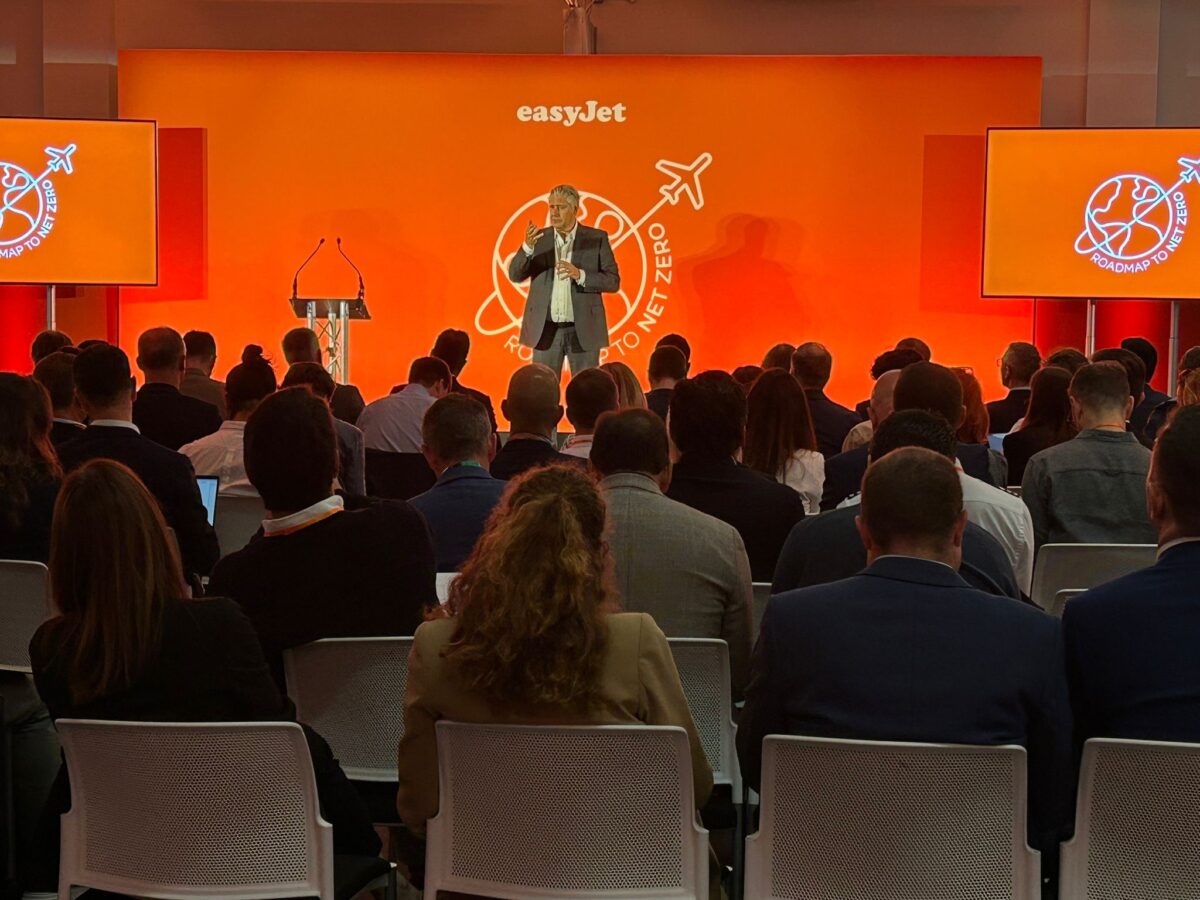A new study conducted by easyJet has revealed that airspace modernization could save around 18 million tons of CO2 a year from European aviation. The analysis also found that inefficient airspace contributes to significant and unnecessary increases in fuel consumption, CO2 emissions, and flight times across Europe.
In carrying out the study, the low-cost airline used AI to analyze and model the carbon impact resulting from airspace inefficiencies across all easyJet flights over the past 12 months. The results showed that if airspace was modernized, easyJet alone could achieve over a 10% reduction in emissions through airspace modernization.
The results revealed that airspace inefficiencies increased CO2 emissions by 10.62% (the equivalent to 663,710 tons of CO2) all because of the current airspace regime across Europe. According to the carrier, the countries with the greatest need for improvement are the United Kingdom, Italy, France, Spain, and Switzerland
The modeling also showed that excess carbon is being released during all flight phases, with the descent phase particularly inefficient due to poorly designed lower airspace near airports. As a result of the study’s findings, easyJet is appealing for urgent reform to modernize airspace and harness these huge efficiency gains, which could contribute significantly to the industry’s decarbonization targets.

The analysis, conducted by personnel in the airline’s Flight Efficiencies team, found that a significant proportion of this inefficiency occurs around terminal airspace, particularly during descent, which is largely due to outdated or poorly designed lower airspace.
The easyJet report states that while airspace inefficiency is a universal issue across the whole of Europe, the greatest inefficiencies for easyJet’s operations were in the UK. Here, seven of the 10 least efficient routes are inbound into London-Gatwick Airport (LGW), with the Southeast of the UK a particular problem area due to high demand and capacity constraints.
Factors causing inefficiencies
As part of this project, easyJet carried out a comprehensive evaluation of all airways utilized across its network, to pinpoint the areas of greatest inefficiency and where immediate reform is needed. The greatest inefficiencies included the following airports and routes where the airline says focus must be concentrated.
Climb phase – the analysis identified London-Gatwick, Milan Malpensa (MXP), Geneva (GVA), Naples (NAP), and Paris-Charles de Gaulle (CDG) as having the most inefficient departures. To improve efficiency, easyJet recommends that airspace must be redesigned to support Continuous Climb Operations (CCO), enabling aircraft to reach cruising altitude more efficiently.

Cruise phase - the upper airspaces over Italy, the United Kingdom, France, and Spain have been identified as some of the most problematic regions in Europe says the airline. These areas face significant inefficiencies due to outdated procedures, complex routing, and limited airspace flexibility. To improve efficiency in these upper airspaces, it’s crucial to expand Cross-Border Free Route Airspace (FRA) Operations to allow for more direct routing and reduce fuel consumption.
Descent phase – inefficiencies are particularly notable in the United Kingdom, Italy, Switzerland, and France, where arrival procedures result in extended flight times and increased fuel consumption says easyJet.
The carrier added that, notably, the recently redesigned arrivals in London the recently redesigned arrivals in London Luton (LTN) and Milan Malpensa have proven to be less efficient than the previous procedures, adding an average of 10 minutes to planned flight times. These inefficiencies are often due to overly complex procedures that prioritize controller workload over operational efficiency.
Study recommendations
To improve descent inefficiencies, the company recommends the redesign of arrival procedures with a focus on reducing track miles, implementing Continuous Descent Approaches (CDAs), and minimizing level-offs.
easyJet said that the study highlights key areas where changes must be implemented to ensure emission cuts can be achieved in the short to medium-term
In the UK, the completion of an airspace modernization program in the UK will ensure that there is a single entity responsible for the timely delivery of the program. Meanwhile, across Europe, easyJet plans to collaborate with individual countries, Air Navigation Service Providers (ANSPs), and airports to identify ways to solve these inefficiencies.

To unlock the over 10% efficiency gain in airspace operations, easyJet’s model indicates a need to put in place structural changes that modernize outdated airspace and remove historic constraints. The quickest wins can be achieved by redesigning lower airspace procedures, such as Standard Terminal Arrival Routes (STARs) and Transitions, to better align with modern aircraft capabilities. Implementing Required Navigation Performance with Authorisation Required (RNP-AR) approaches at more airports will also bring significant improvements.
These procedures, already successfully deployed in Scandinavia, offer highly predictable tracks that avoid overflying densely populated areas, reducing both noise pollution and environmental impact.
What does the airline say?
“Airspace modernization is the quickest and most cost-effective way to reduce carbon emissions, but the process is being shackled by needless bureaucracy,” says Johan Lundgren, CEO of easyJet.
“Our data proves that the airspace corridors we use today, which were built in the 1950s, are simply no longer fit for purpose. Adapting them to be more efficient would not only be significant in terms of CO2 reduction but also for journey times and improving the experience of passengers.
“This issue cannot be kicked down the road any further. If we’re serious about achieving net zero, policymakers and regulators need to come together to find a route to unlock these significant gains, and now.

